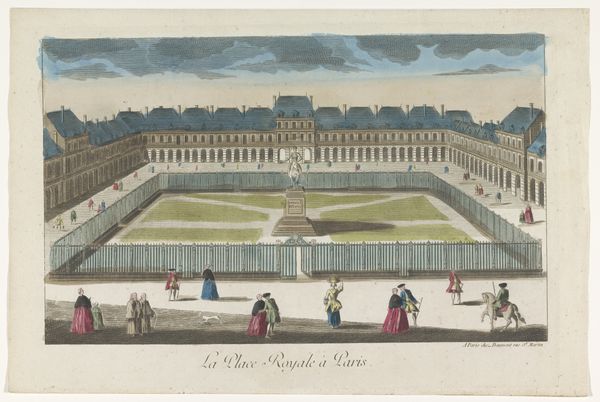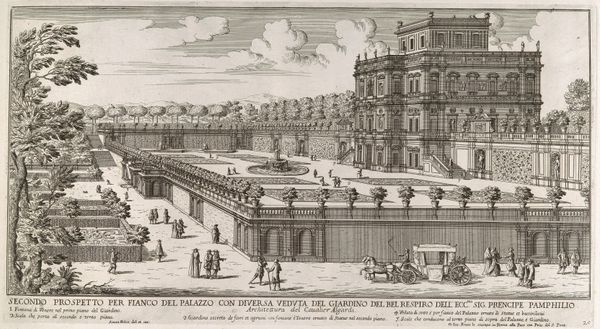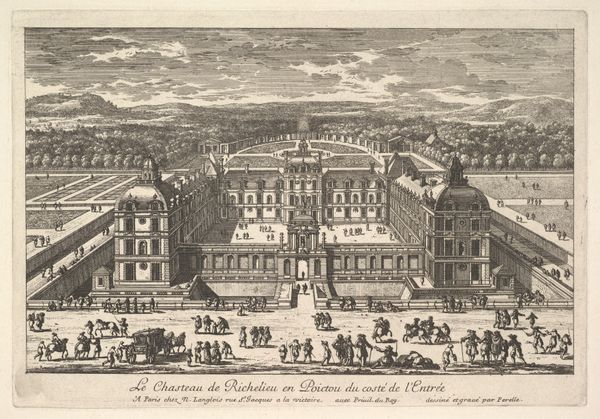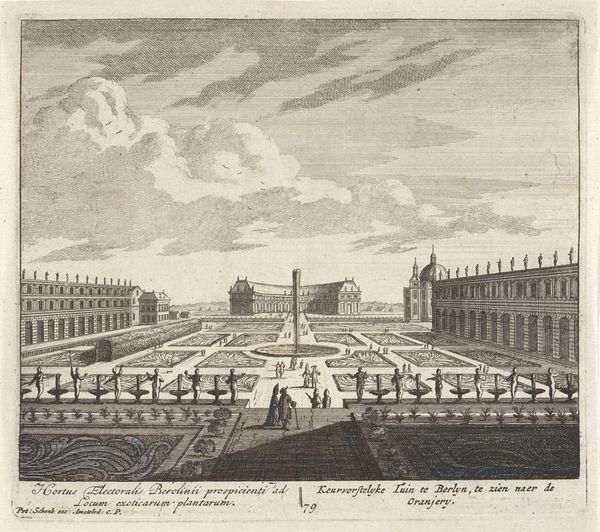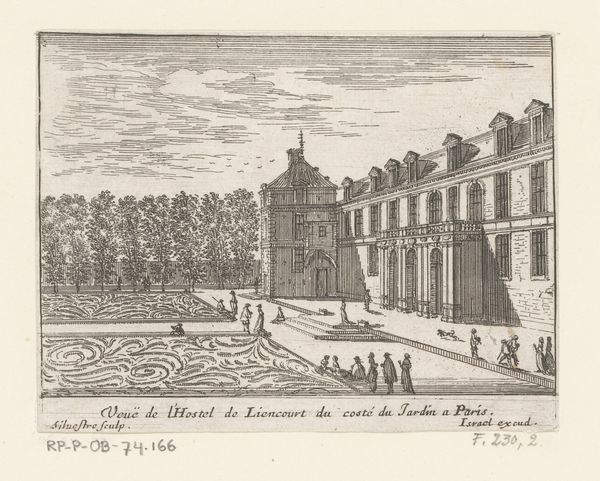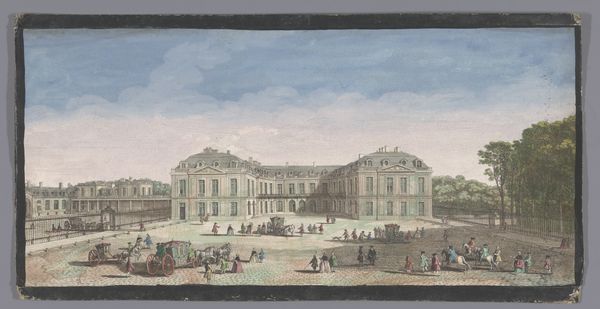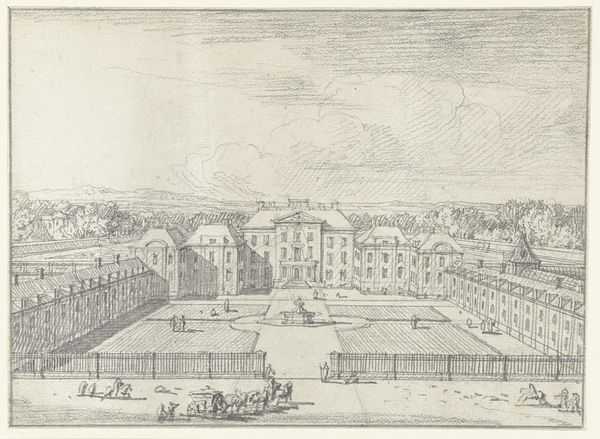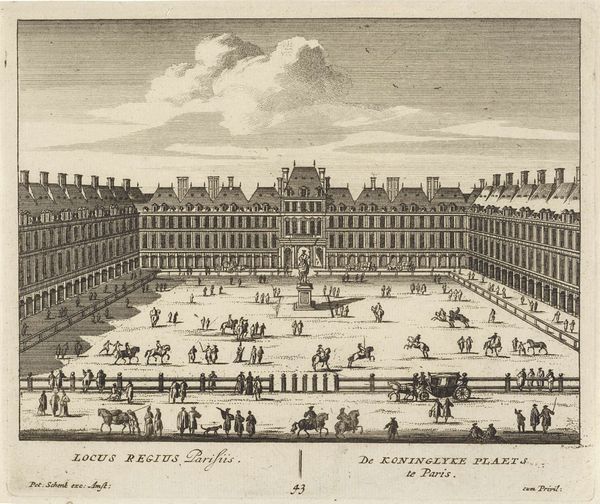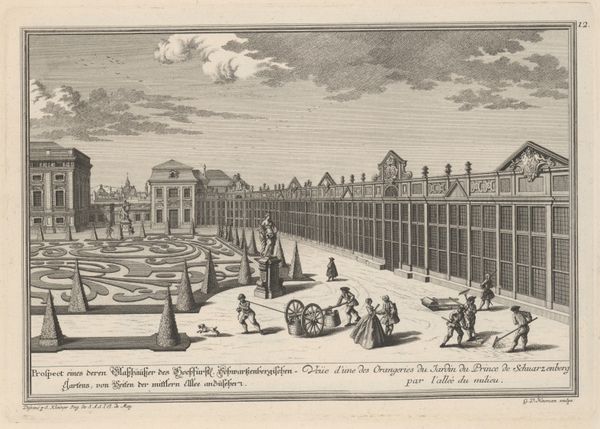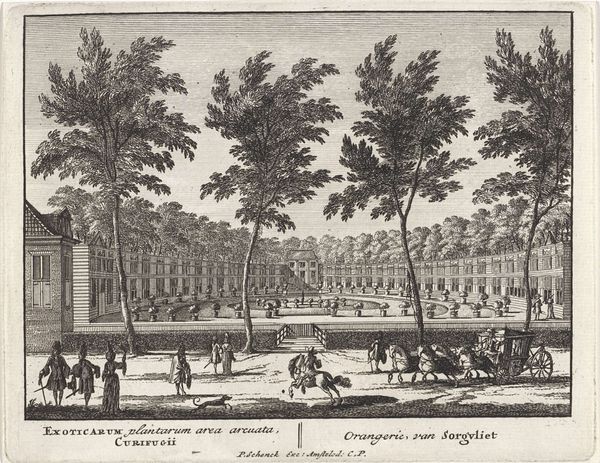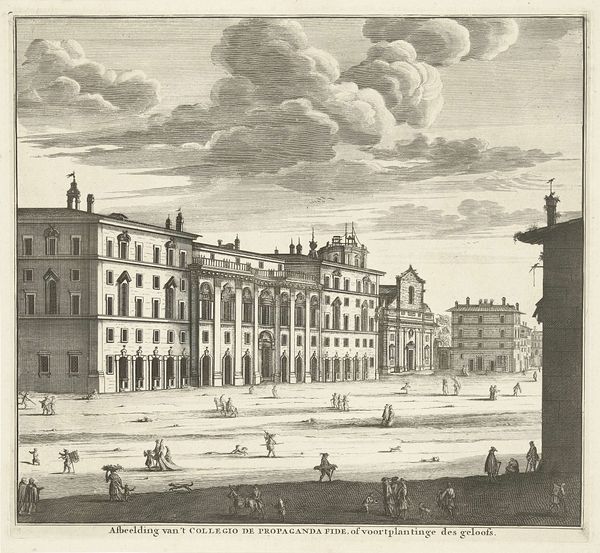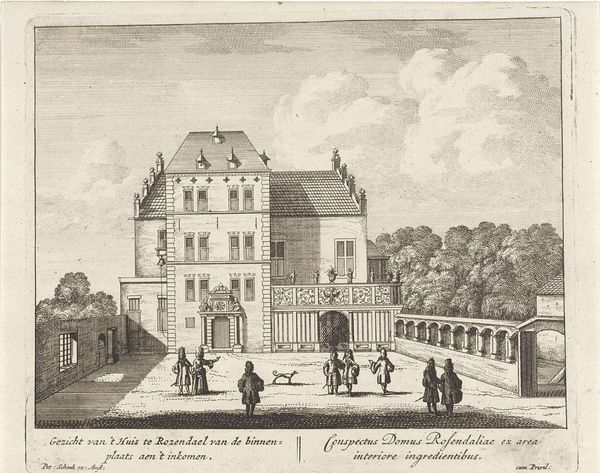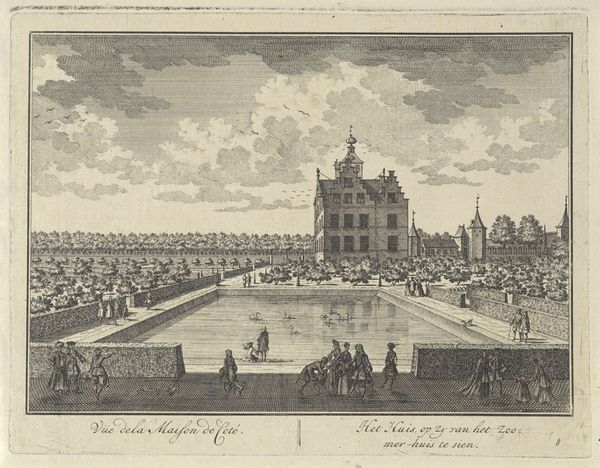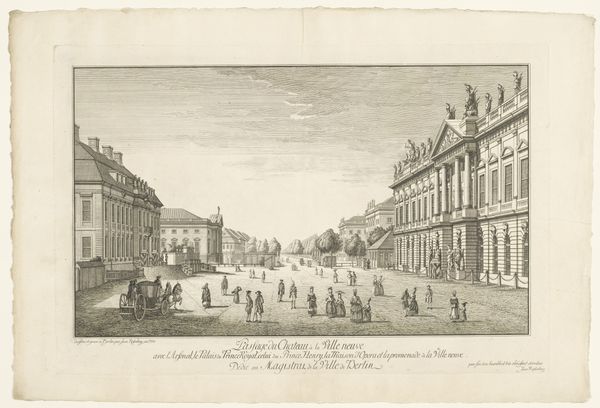
drawing, print, etching, architecture
#
drawing
#
baroque
# print
#
etching
#
landscape
#
cityscape
#
architecture
Dimensions: sheet: 9 3/16 x 18 3/16 in. (23.4 x 46.2 cm)
Copyright: Public Domain
Curator: Here we have Jacques Rigaud's "Vue de la Grande Façade du Vieux Louvre," created between 1729 and 1752. It’s a striking etching and print. Editor: It’s beautiful! The way Rigaud captured the immensity of the Louvre, while also depicting the lively street scene...it feels like stepping back in time. Curator: Rigaud was known for his detailed architectural views. This work offers us a glimpse into the urban planning and social life of 18th-century Paris. Notice the baroque style evident in the building's elaborate ornamentation and the dramatic play of light and shadow. Editor: It's more than just a cityscape, though. Think about who had access to that space, to that vision of power and beauty. The casual depiction of carriages and pedestrians normalizes a social hierarchy that was very real and very unequal. The etching reminds us to read not just the grand facade, but the context that sustains it. Curator: Absolutely. And beyond social access, Rigaud’s piece contributed to a broader narrative of Parisian grandeur. Prints like this were widely circulated, shaping perceptions of the city both at home and abroad. The Louvre itself was undergoing constant transformation during this period. Editor: True, this print flattens any social tension. By glorifying the architecture without interrogating its meaning, the work runs the risk of promoting cultural ideals which aren’t critically assessed. However, these kinds of historical artifacts are necessary for current analyses of how urban design impacts class, and race, or any marker of identity, or access. Curator: Well, that tension is inherent in much of the art of the era. By depicting the physical reality of the Louvre, Rigaud also provides a window into the social and political values of the time. Editor: In some ways, it acts as both a celebration of progress and a quiet document of a society entrenched in power imbalances. Curator: I’d agree. It’s a visual document ripe for historical analysis. Editor: A layered cityscape inviting multiple viewpoints. I wonder what the 21st-century Rigaud print might include, in this location, in this city?
Comments
No comments
Be the first to comment and join the conversation on the ultimate creative platform.
